#6 in the series.
“okay,” I squeaked out. Patricia got the biggest laugh out of that feebleness and chuckled until I fell fast asleep. I was sooo tired. I didn’t even hear the coffee grinder the next morning! How is that possible? A full couple of days, working at the BEEC until midafternoon and then exploring the landscape. I guess it caught up with me.
She said the wind howled last night and the now-typical ultra-fine layer of sand on the table in the camper confirmed it. Must of happened.

Manning the desk at the BEEC while the boss was running an errand, I watched an SUV pull in with a river raft on a trailer. A young woman blasted through the door, “I just completed my Junior Ambassador book and I want a patch!” Uh, ok, I started looking around…
“They’re in one of the drawers! It has a canyon wren on it.” Ah, there they are. I pull one out of the plastic.
“Thanks!” She blasts back out the door and is gone. Hmm, I guess I could have at least gotten her name. Should she have paid for that? The book was wrinkled and sun-dried, apparently she had filled it out floating down the San Juan.
After another “hard” day, Patricia and I were looking for a late afternoon hike and Carolyn, an education specialist at the BEEC, suggested we go find the petroglyph panel in lower Butler Wash. It’s close-by and perfect for the afternoon.
Taking a left toward the Bluff airport off of Hwy 163, we immediately cross a one-lane cattle guard. We’re supposed to take a hard right at the temporary corral where there is an old drill hole. The corral had packed up and left, but the black pipe for the drill hole is there and we ride off into the dirt. Bouncing along a couple of miles of bedrock and sand, we arrive at a large “pour over.”
And just like it sounds, it’s an exposed slab of sandstone bluff where a section has worn smooth from water flow, forming a spout of sorts over the edge.
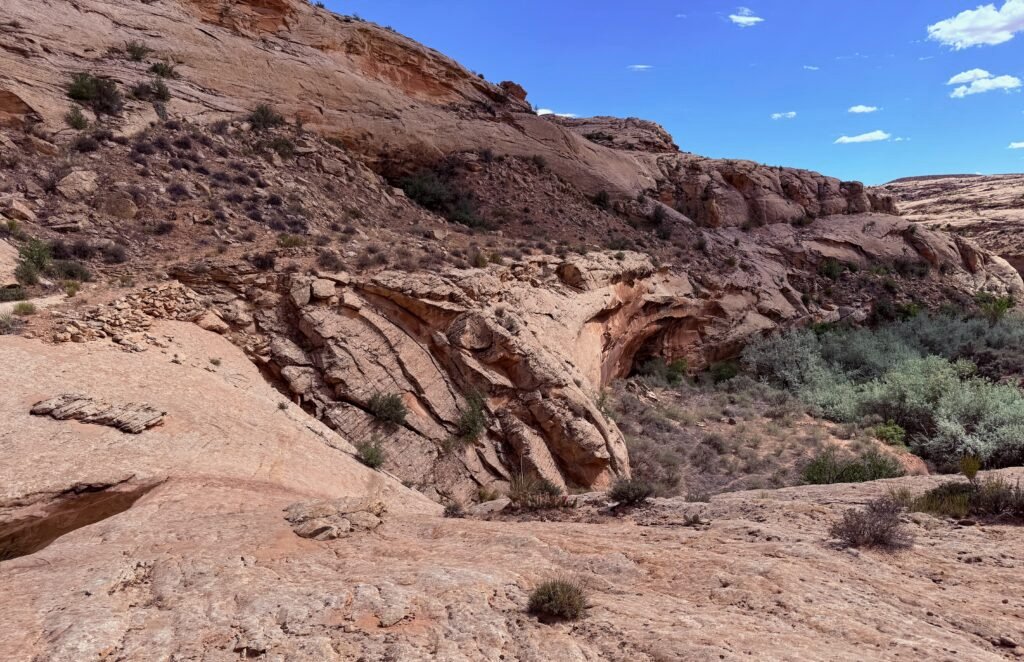
In the picture, you can see where flowing water has formed the pothole on the left edge and then the smooth spout as it goes over the edge. The trail forms at the rock pile just on the other side. It’s an old “dugway,” a route down into the wash that takes advantage of a descending sandstone ledge. It drops into the greenery on the far right.
At the trail entrance is some “cowboy art” carved into the stone from the 1930’s. The horse carving is a pretty nice piece of work!
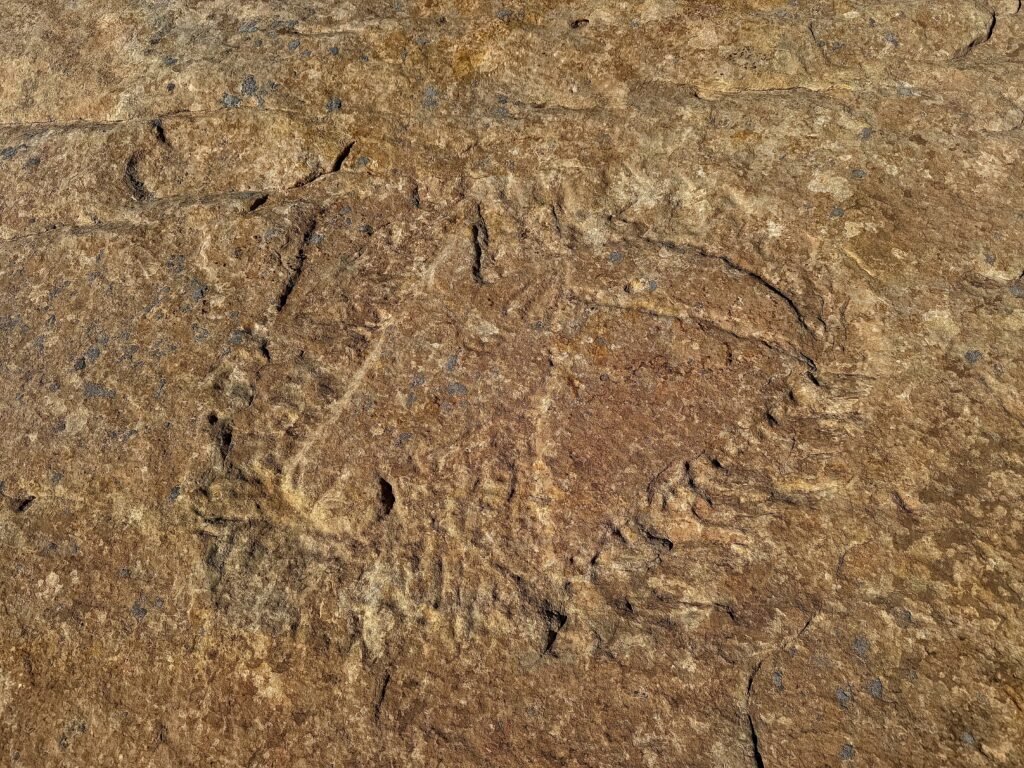
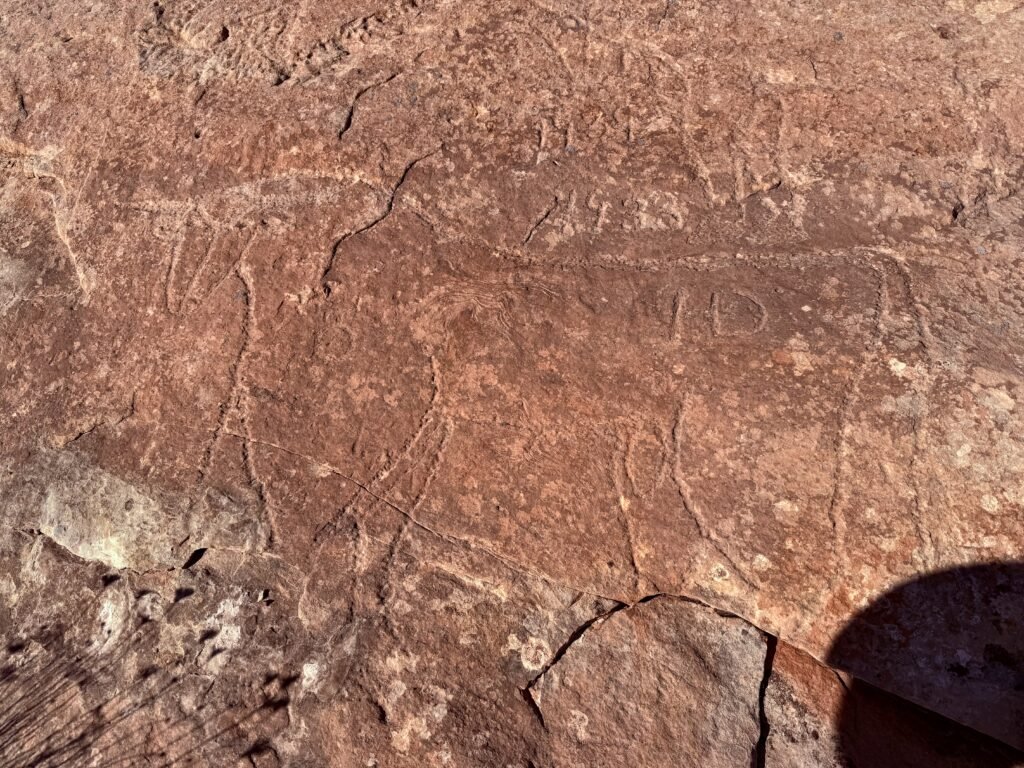
Down into the wash we find a small stream from the recent rains. We cross it several times as we wander through the lush grass and shrubby trees.


It’s a bit overgrown but eventually we pop out of it and make it to the San Juan. It looks like chocolate milk from all the sediment it typically carries.
Turning upstream along the bluff, we find art work everywhere. These must be quite old, I guessing, based on the fact at how well they blend into the rock patina. Lots if interesting characters. What do they mean?

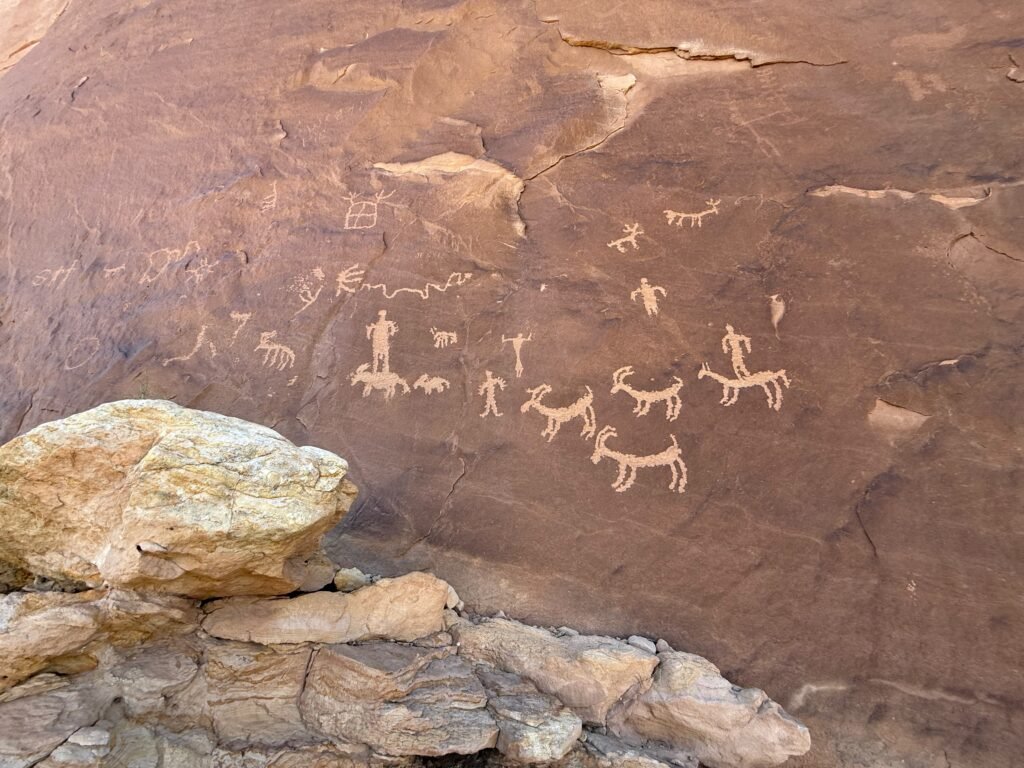

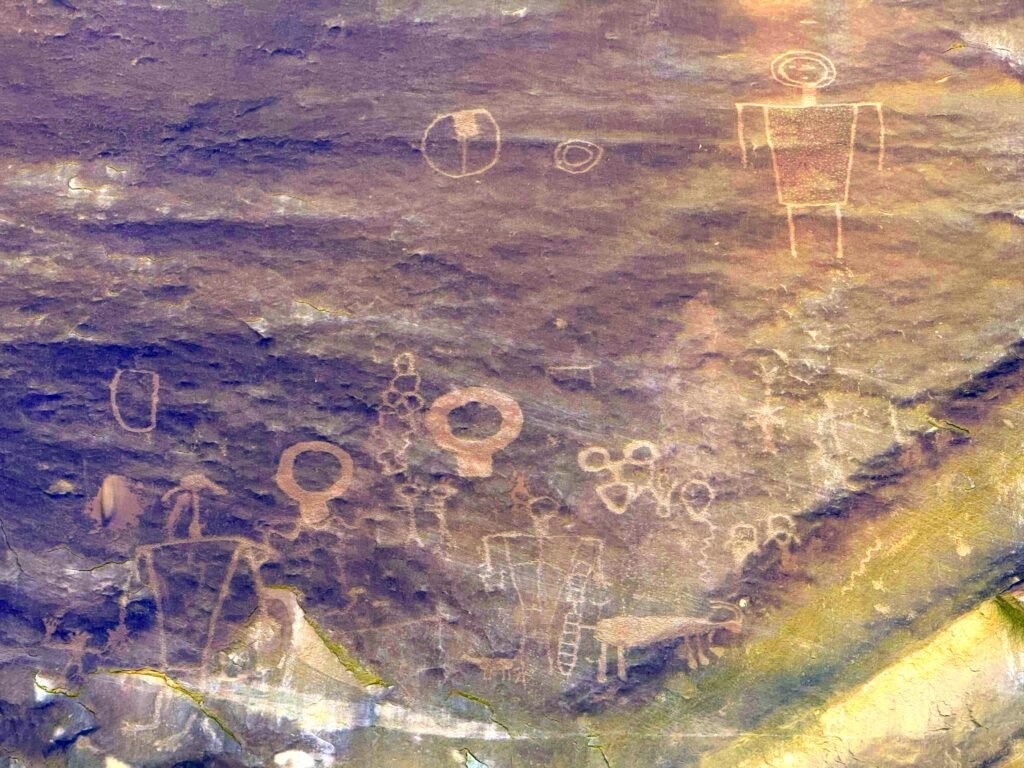
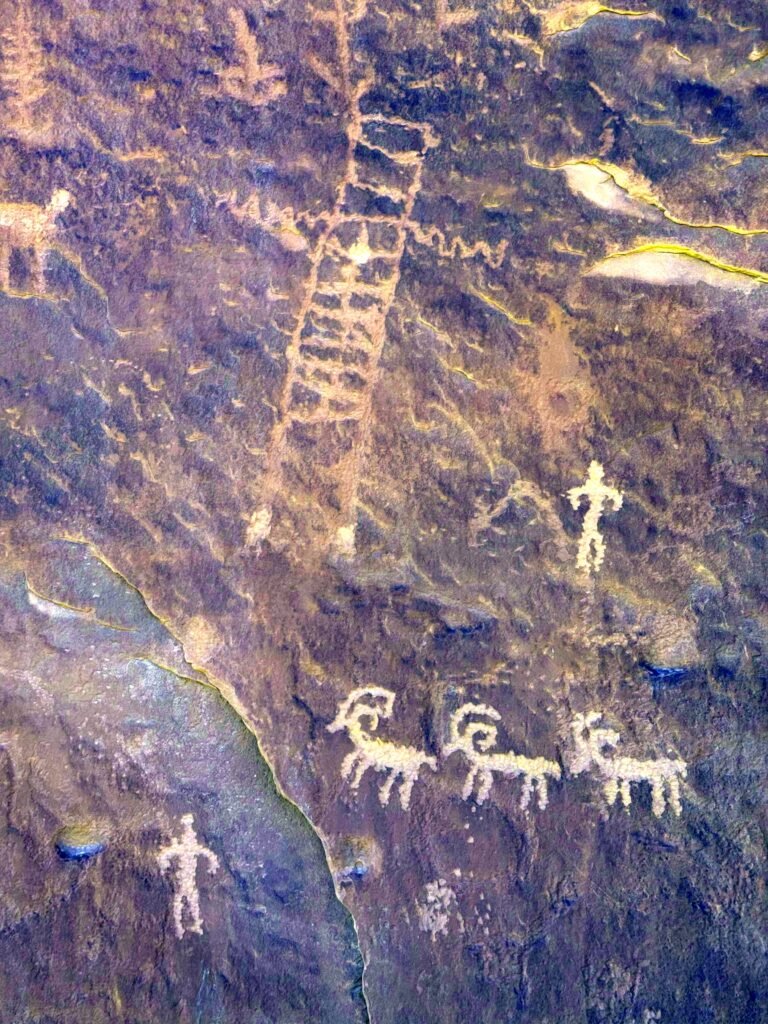

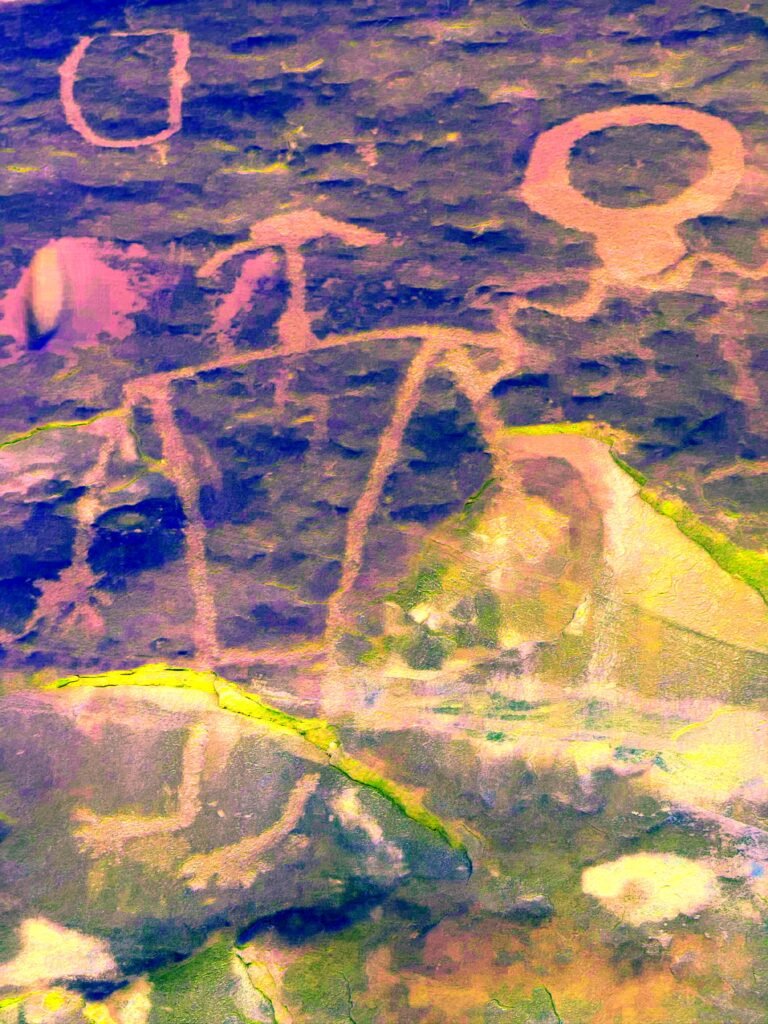
We’re up above the river, so anyone traveling down it could easily see them. What messages are they providing?
We hear a bird call. Could it be? Looking up, we see a peregrine falcon land on a shelf hundreds of feet above us.

Wow! One for the bucket list. It must be nesting, and it flies back off in a few seconds and on downriver. Sorry, no picture on this one.
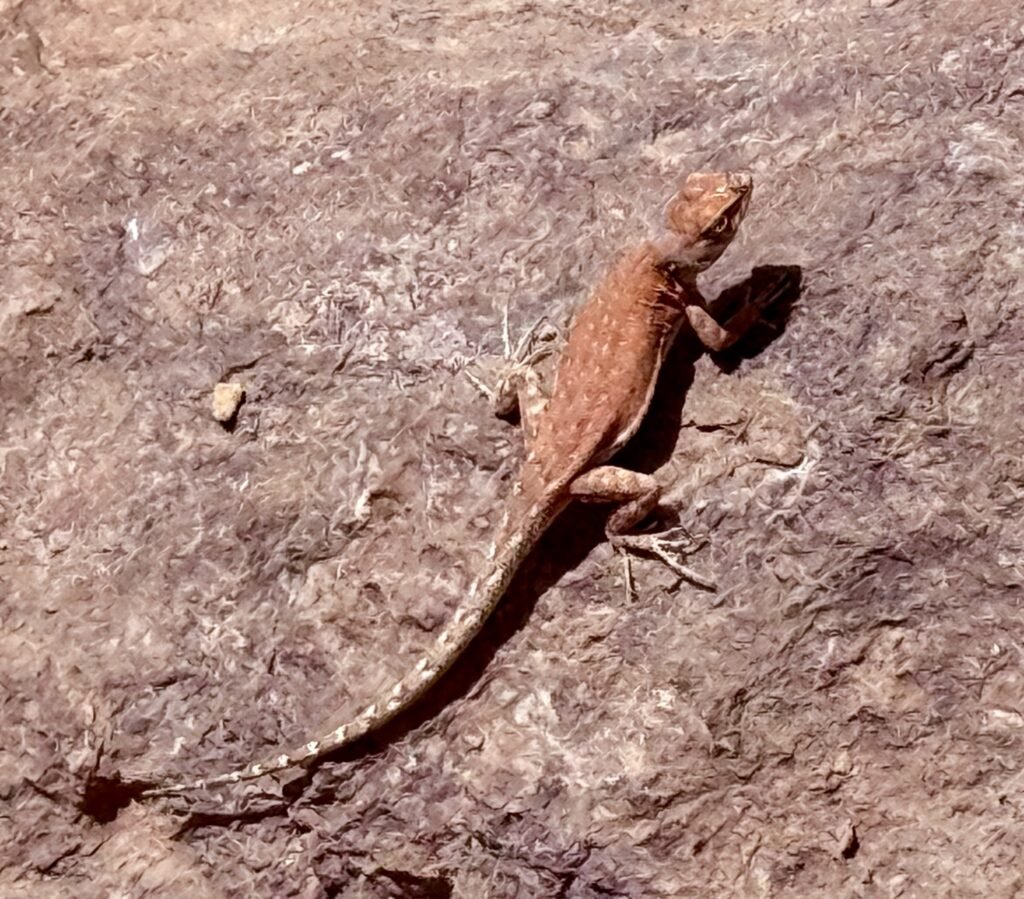
Lizards are everywhere! And they are incredibly fast in the hot sun. And they’re not very afraid. They run under your feet, between your legs and come out from under the rocks to take a look at you.
In Peru, we learned that there is a certain white fungus that grows on prickly pear that is mixed to make all manner of natural dyes for the wool. This appears to be the same! Click on the picture to go to the post. The section near the middle explains a little more.
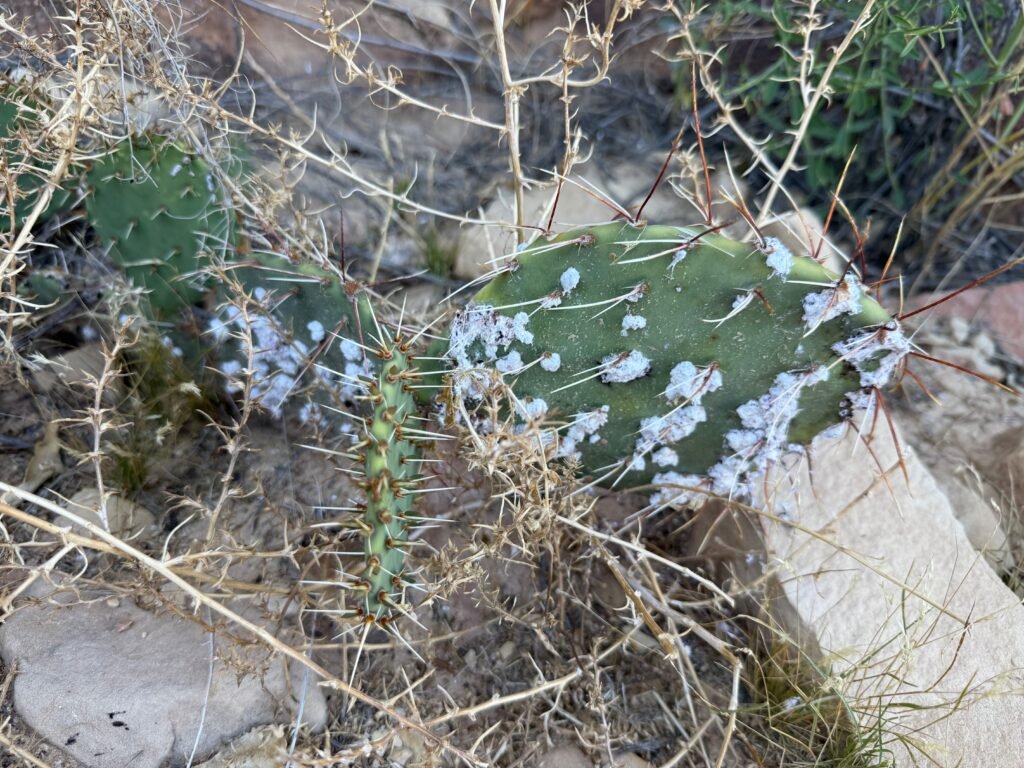
It’s funny how much faster it seemed climbing out. About a 3-mile round trip and a pleasant afternoon.
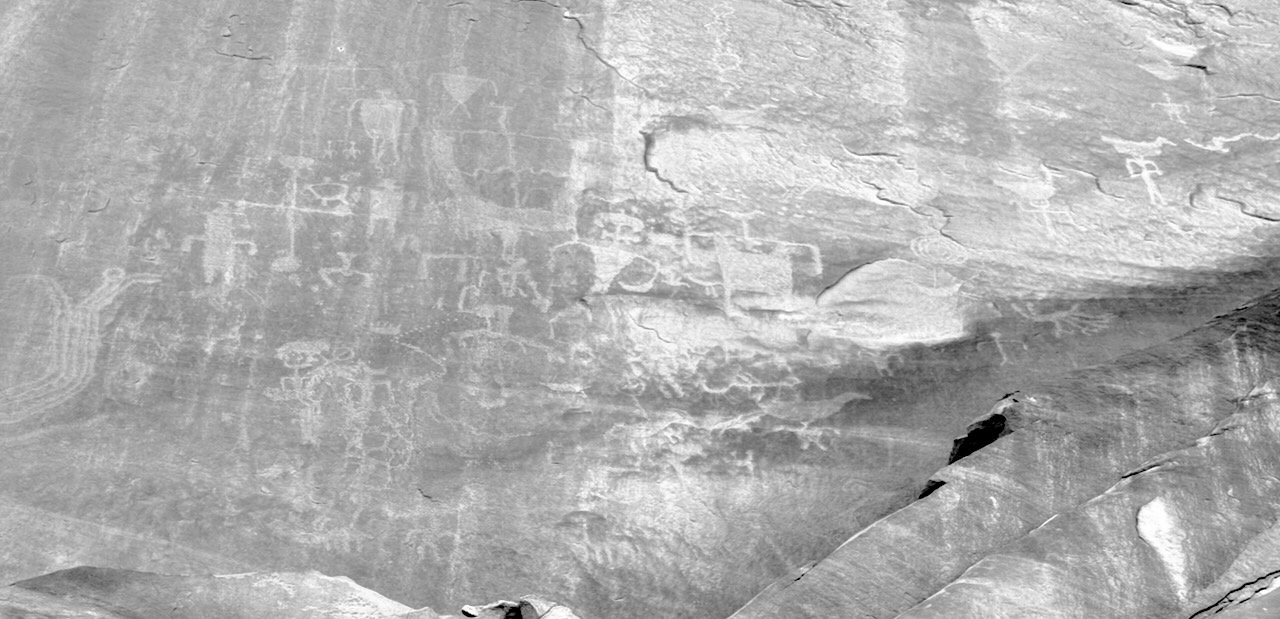
Leave a Reply